How to grow St John's Wort – discover low-maintenance, native varieties for long-lasting interest in your flower beds
This pretty perennial is easy to grow and some species will bloom all summer long
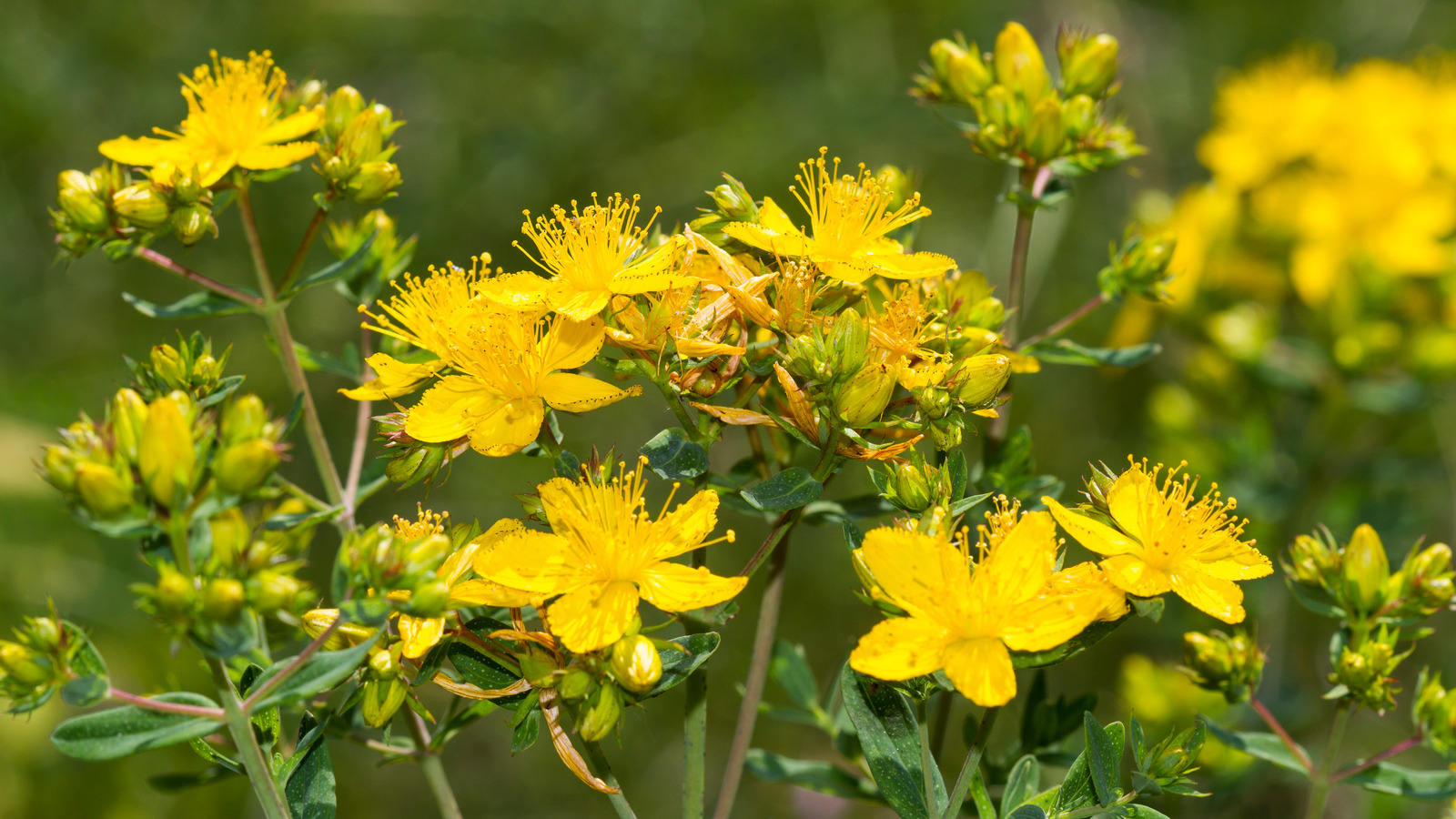

St John's Wort (Hypericum spp) is a pretty perennial shrub, typically with bright yellow flowers followed by distinctive clusters of berries. There are hundreds of species, some with medicinal properties, and many native to the US where it's also referred to as goatweed and Klanath weed.
A couple of the most popular native species are Hypericum prolificum, or shrubby St John's Wort and Hypericum densiflorum (bushy St. John's wort). These plants will tolerate various conditions, so they are among the best perennials for low-maintenance gardening.
These St John's Wort species are a great choice if you're keen to increase the native planting in your backyard. Accustomed to the climate and conditions of particular regions, native plants tend to require less maintenance or supplemental watering, when grown in gardens in those areas.
How to grow St John's Wort: the varieties to look out for
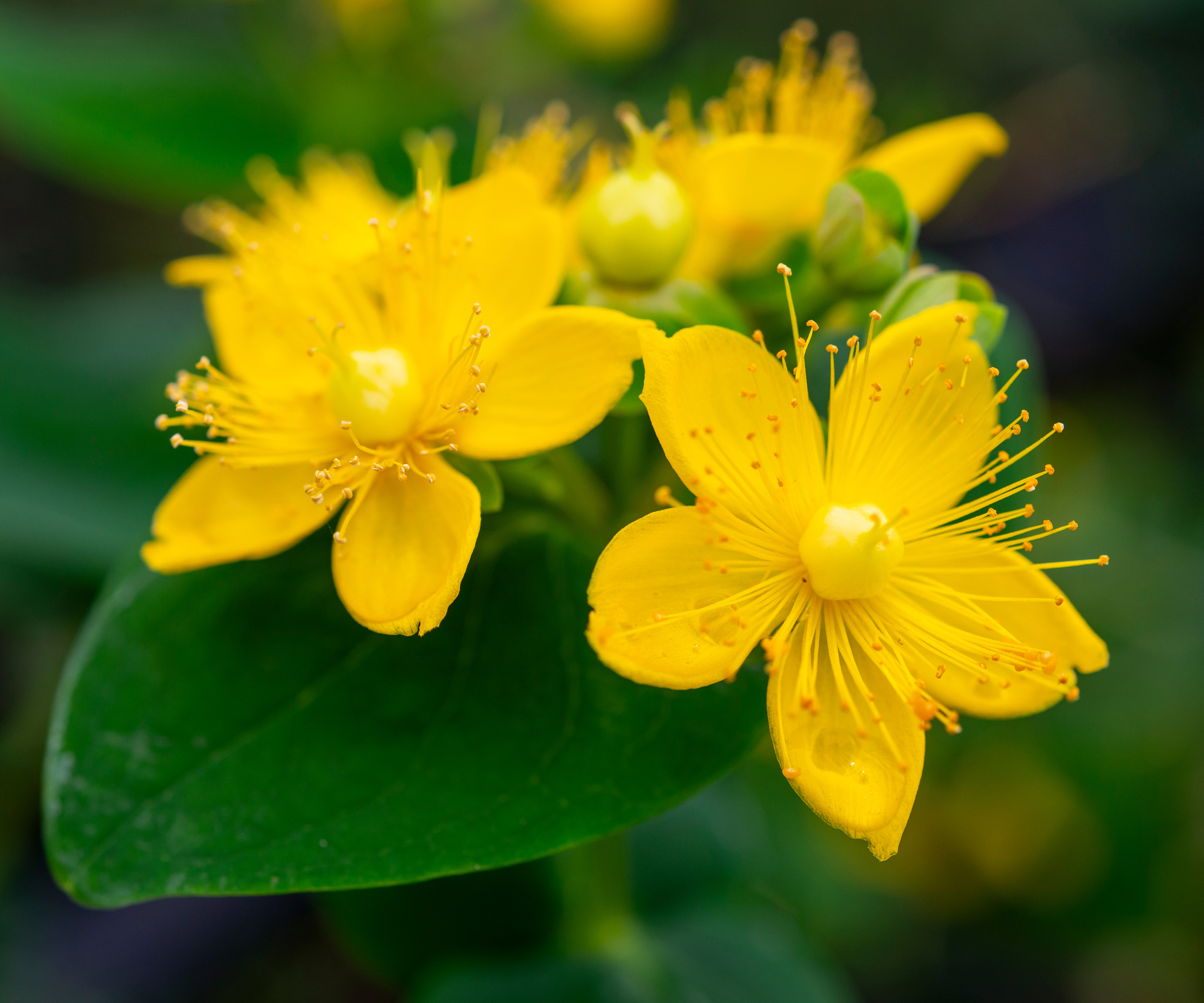
Hypericum perforatum is the species generally used in traditional herbal medicine, however this species is European and is considered an invasive plant in many states. So do check which type you're buying if you're considering Hypericum in your flower bed ideas.
According to Justine Kandra, horticulturist at the Kemper Center for Home Gardening, Missouri Botanical Garden, of approximately 500 species of Hypericum, around 50 are native to the United States and there are some favorites for gardeners.
'Hypericum prolificum (shrubby St. John's wort) is a compact, deciduous shrub with upright stems and a rounded growth habit that originates in the eastern US,' says Justine. 'The bark on the mature stems will exfoliate to reveal coppery orange colored inner bark.
''Hypericum kalmianum (Kalm's St. John's wort) is an evergreen to semi-evergreen shrub with upright branches and a dense, mounding growth habit. This species originates from the Great Lakes region of the United States,' says Justine.
'Hypericum densiflorum (bushy St. John's wort) is similar to shrubby St. John's wort but can get slightly taller and tends to have narrower leaves. It also features showy, exfoliating bark and is native to parts of the Appalachian Mountains and Atlantic Coastal Plain.'
Another popular St John's variety is Hypericum calycinum (creeping St. John's wort) aka 'Aaron's Beard', which is native from southeastern Bulgaria to northern Turkey and is often planted as a ground cover.
'Hypericum calycinum has a low-growing and spreading habit,' says Justine. 'In warm climates it is evergreen but will die back or show damage to the growing tips in colder climates. This does not affect flowering, since it blooms on new growth.'
'Native Hypericum species can be found throughout the US, and the range varies quite a bit by species,' says Kim Eierman, ecological landscape designer and author, The Pollinator Victory Garden, available from Amazon. 'In my landscape design practice, I often use Hypericum prolificum. It's a medium-sized rounded shrub that reaches approximately 4 ft tall by 4 ft wide, and is native to much of the Eastern half of the United States.'
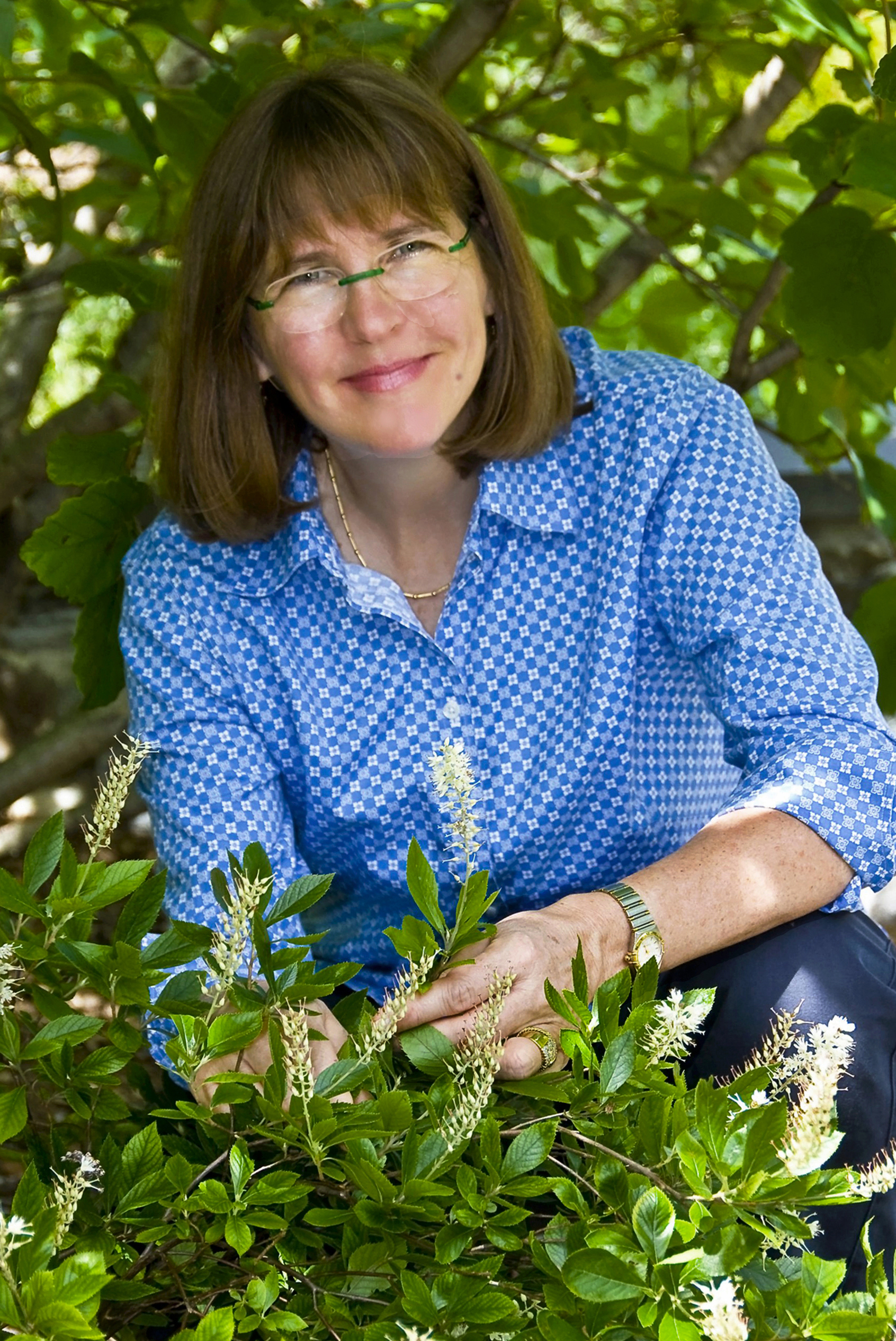
Kim Eierman is the Founder of EcoBeneficial LLC. She is an ecological landscape designer and environmental horticulturist specializing in native plants. Based in New York, Kim teaches at the New York Botanical Garden, the Brooklyn Botanic Garden, The Native Plant Center and the Massachusetts Horticultural Society.
Growing habits of St John's Wort
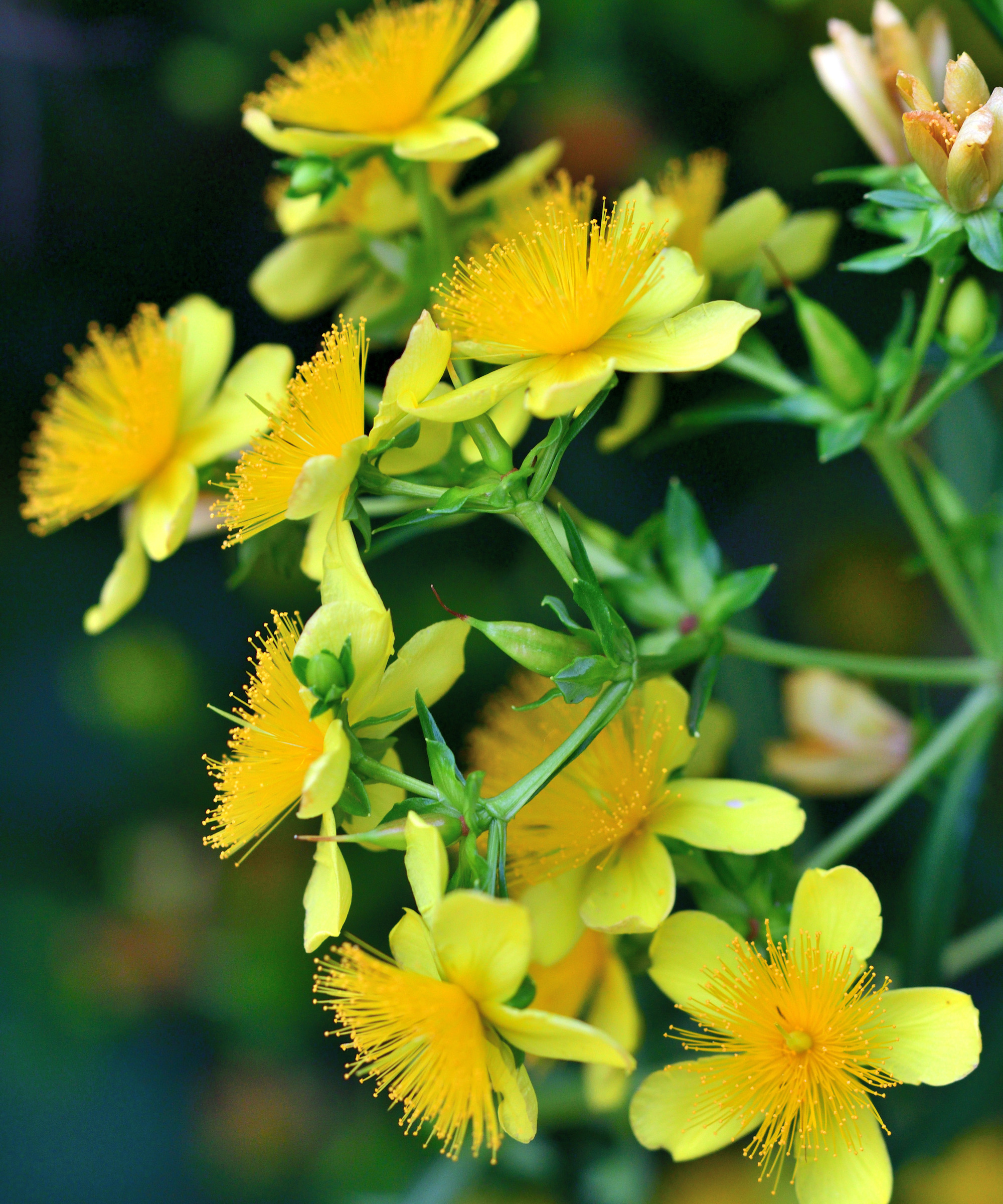
Anyone looking to learn how to grow St John's Wort needs to know it is a wonderful plant for wildlife garden ideas, as it requires little care. Although it offers no nectar, it provides pollen to various pollinators. Different types of beneficial bugs feed on different types of plants, so Hypericum is good to include as part of a mix of shrubs and flowers in a garden for pollinators.
'Bloom time for Hypericum prolificum occurs in summer when the plant's bright yellow blossoms attract significant numbers of bumble bees that collect its pollen,' says Kim. 'Sweat bees and hover flies are less frequent visitors, but will also visit this plant to collect pollen. Once established it is very low maintenance and is highly resistant to deer and rabbits.'
This Hypericum kalmianum 'Ames' from Nature Hill's, is also popular with pollinators and gardeners. It grows well in zones 4-7 and produces golden yellow blooms in mid-summer.

Justine Kandra is a horticulturist at the Missouri Botanical Garden in St. Louis, Missouri. A botanist by training, she enjoys helping patrons with their plant problems at the Kemper Center for Home Gardening.
Care guide for St John's Wort
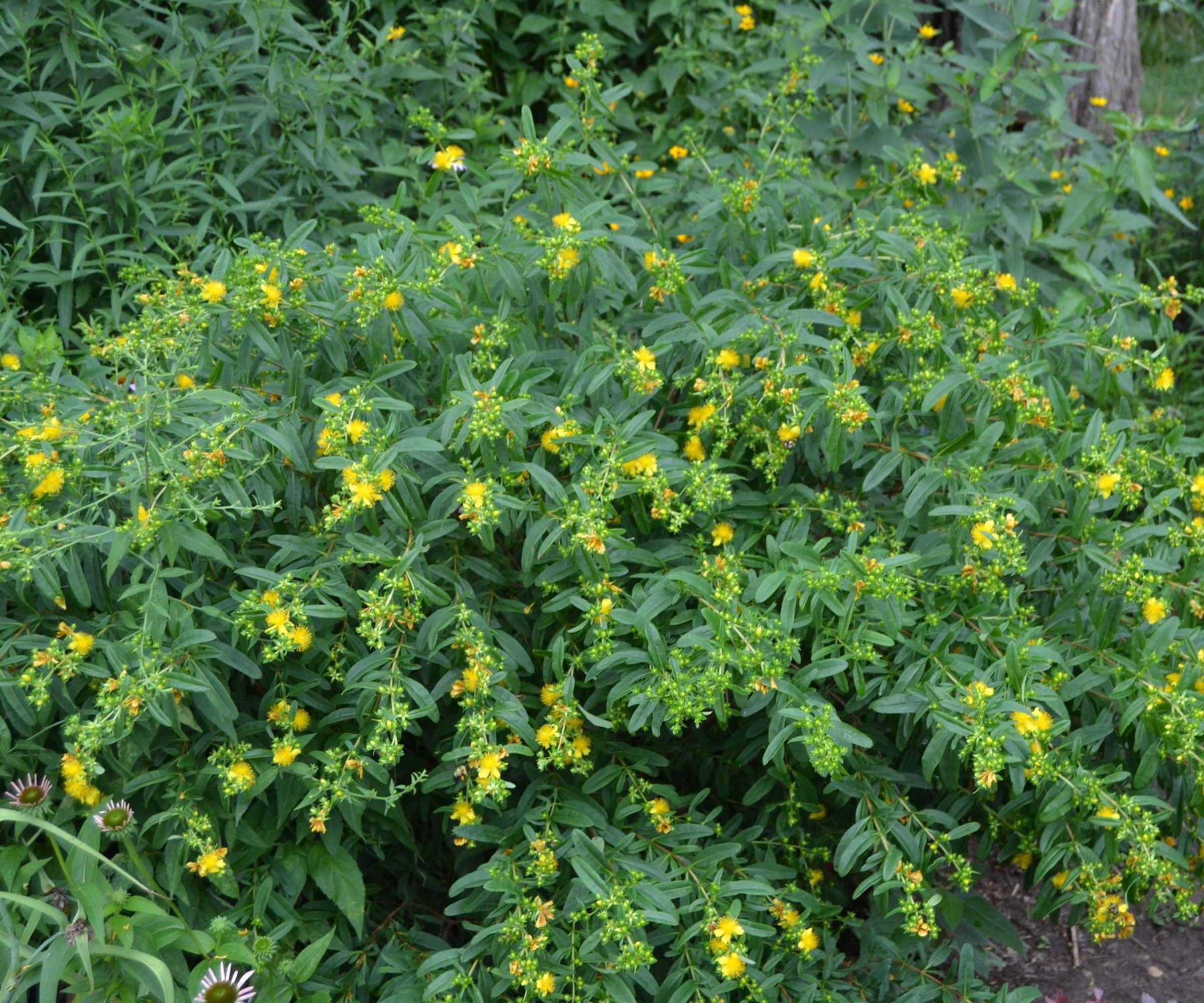
Soil: Average, evenly moist, well-draining soils. 'Hypericum kalmianum, densiflorum, prolificum, calycinum and other sister species like the soil to be evenly moist, however, they will be tolerant of occasional periods of drought once established,' says Justine. 'Prolificum in particular, tolerates a wide range of soils including dry rocky or sandy soils.'
Light: All of the native species mentioned prefer full sun to part shade
Watering: If grown in its native landscape, hypericum requires little to no supplemental watering. Hypericum prolificum is even suitable for rock gardens.
'Hypericum prolificum, in particular is tolerant of drought,' says Ethan Dropkin, landscape designer, Larry Weaner Landscape Associates. 'It's also deer resistant, and does not have any major pests or diseases.'
Pruning: 'Prune Hypericum kalmianum, prolificum and densiflorum as needed in early spring,' says Justine. 'Kalmianum can grow 2-3 feet tall and wide and will bloom July to August. Prolificum will bloom June to August, while densiflorum will bloom from June to September and can reach from 2-7 ft tall and 3-6 ft wide.
'In warm climates shear or cut back calycinum plants in late winter or early spring every 2-3 years to encourage new growth, which will flower July to August.'
Plant this Hypericum calycinum from Garden Goods Direct in spring for a show of yellow color in your flower beds this summer.
Toxicity: Although hypericum has been used for healing for millennia, and continues to be used to treat depression and for other medicinal purposes, this plant can be mildly toxic to people and pets.
Hardiness zones: Hypericum kalmianum 4-7; Hypericum prolificum and densiflorum 3-8; calycinum 5-9.

Educated in Landscape Architecture and Horticulture at Cornell University, Ethan Dropkin has taken a love of plants since childhood and followed that to a career in landscape design. His focus is native plants and landscapes at LWLA, as well as lecturing on horticulture and plants at large. Ethan has a particular love of plants (and plant communities) that thrive in difficult conditions and how those plants and assemblages can be adapted to horticultural practice to solve some of our most difficult planting issues.
FAQs
What should I grow alongside St John's Wort?
Plants that like similar soil types and light requirements will grow well together. Consider those with complementary and contrasting colors too.
'Hypericums will grow well with pretty much any similarly easy-going perennials or shrubs in a sunny, mixed border,' says Justine Kandra. 'Their bright yellow flowers can be contrasted with dark leaved plants such as Physocarpus opulifolius 'Summer Wine' or Penstemon 'Dark Towers'. Try pairing hypericums with purple, pink, or blue flowers that bloom around the same time, such as Vernonia 'Summer's Swan Song', Allium 'Millenium', or Nepeta racemosa 'Walker's Low'.'
Whatever you decide to grow in your flower beds alongside St John's Wort, it will create a vibrant show of color, with its bright yellow blooms, and provide a haven for wildlife.
'Hypericum prolificum is excellent when massed or as a highlight in a mixed perennial border and it can seed around prolifically,' says Ethan. 'It's prized for its prolific bloom and long bloom period, which attracts pollinators.'
Sign up to the Homes & Gardens newsletter
Design expertise in your inbox – from inspiring decorating ideas and beautiful celebrity homes to practical gardening advice and shopping round-ups.
Jacky Parker is a freelance lifestyle journalist and writer, producing a wide range of features for magazines and websites. She has written for Homes & Gardens and its sister titles, Livingetc and Country Homes & Interiors for more than 15 years, both as a freelance contributor and staff member, regularly reporting on the latest interiors, gardens and lifestyle inspiration, speaking to experts in their respective fields and discovering the newest tips.
You must confirm your public display name before commenting
Please logout and then login again, you will then be prompted to enter your display name.
-
 ‘It leads to more headaches than it's worth’ – 4 reasons you should never store things in your oven, including fire risks and serious illness
‘It leads to more headaches than it's worth’ – 4 reasons you should never store things in your oven, including fire risks and serious illnessYour oven is for cooking, and cooking only, experts urge
By Chiana Dickson
-
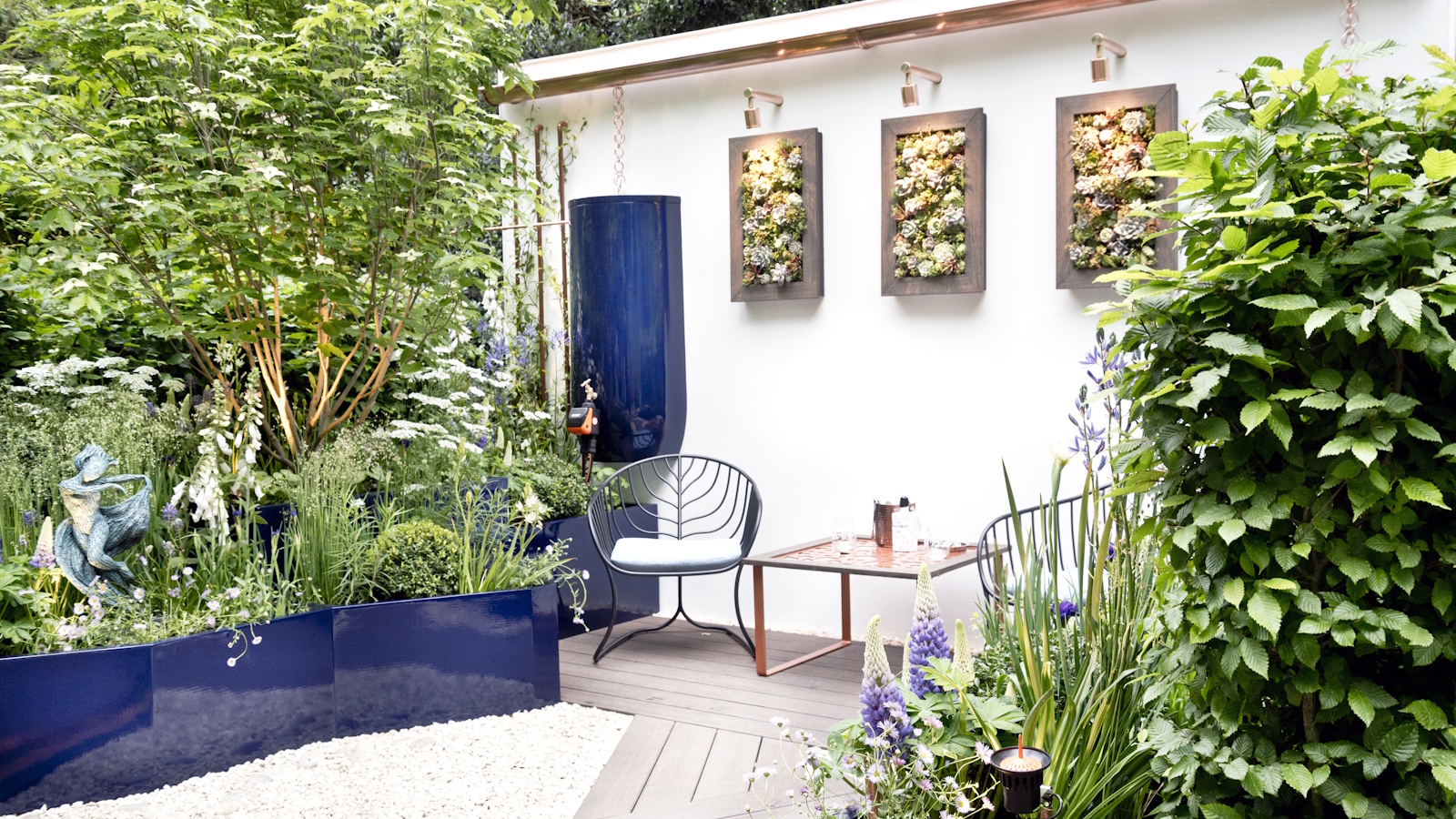 Urban gardening ideas – 7 creative ways to grow in small spaces, balconies, containers, indoors, and more
Urban gardening ideas – 7 creative ways to grow in small spaces, balconies, containers, indoors, and moreMake the most of your space with these innovative ways to garden
By Tenielle Jordison